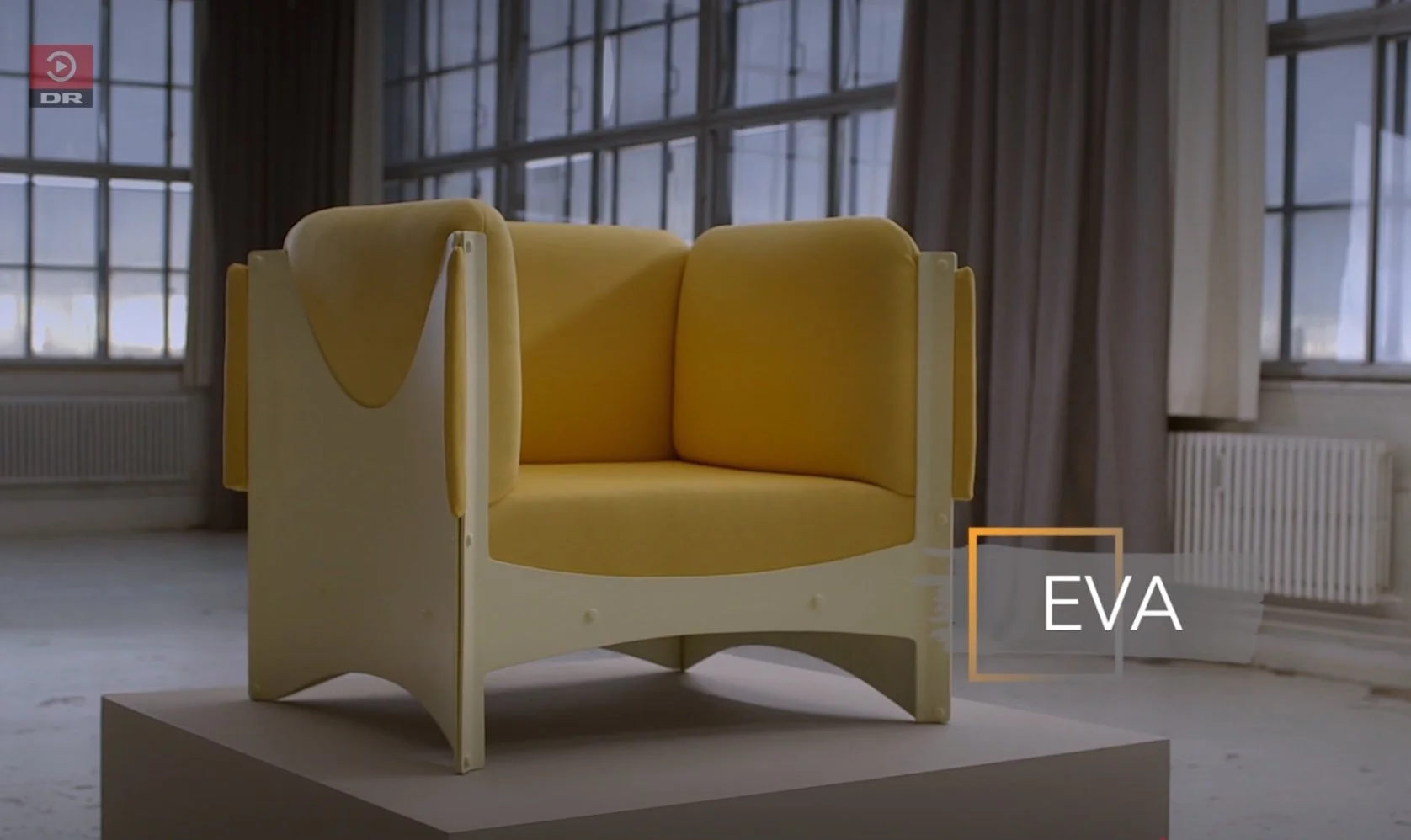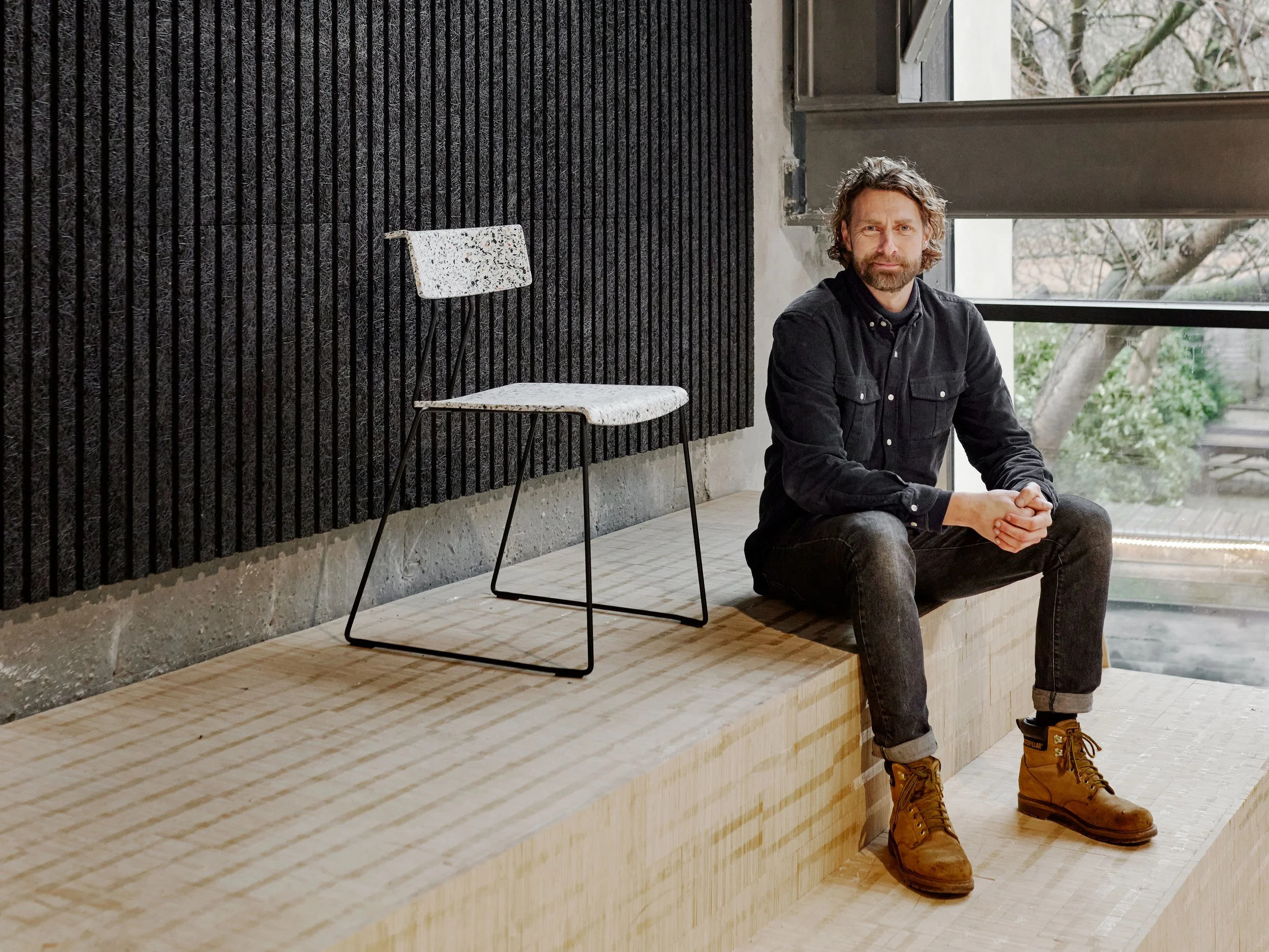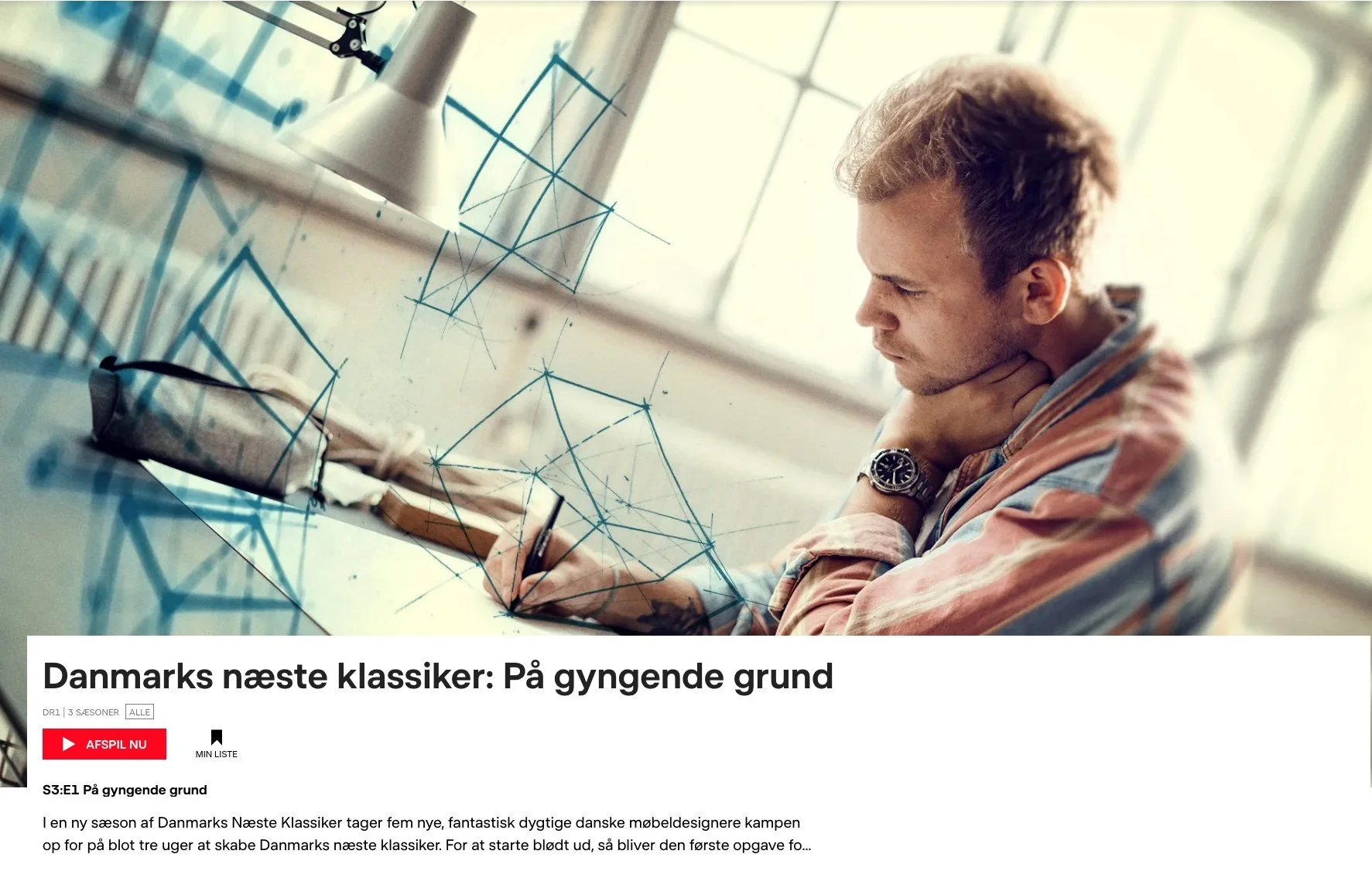Danmarks næste klassiker / Denmark's next classic
/The fourth television series of the design programme Danmarks næste klassiker has opened on DR - Danske Radio.
It follows the same format, with five designers and in each of the six episodes they are set the task of designing a specific type or piece of furniture for that episode. There are usually some particular functions or features that have to be incorporated into the work.
Again the presenter is Mette Bluhme Rieck with two well-known and well-established designers - Louise Campbell and Kasper Salto - who provide guidance and then judge the designs at a presentation at the end of each programme. Again this year, immediately before the final decision, the works are shown to a selection of the public to comment on and test the designs …. often with quite some humour.
Although the programmes are broadcast just a week apart, in reality the designers are given three full weeks to design and then produce their prototype. During those three weeks they record comments and short films on their progress, with sessions on line to discuss their design process with the judges and, during those three weeks, Mette Bluhme Rieck also visits the designers in their studios. This reveals much about how various ideas are developed and shows how the materials chosen and the practical and technical background of the designers themselves produce five designs of very very different character.
Yet again, what comes through clearly through the programmes, is that these designers rely on small independent workshops with specific skills in working with specific materials. This close relationship, between the designer and the craftsman or manufacturer, has always been crucial to the success of modern Danish design.
The task set for the first episode in this series was to design a table. Each episode produces a single winner from the five designs and, in the next episode, the designers will move on to another project …. in the second episode in this series they will have to design a lamp.
Obviously, the designers can anticipate and, to some extent, prepare for what they might be asked to design so an “overraskelse” or surprise is thrown in to give the programmes a slight twist. This can be site specific and can actually be a commission for a design …. in season three, the designers had to design a chair for the lobby of the youth theatre in Copenhagen that was then undergoing extensive work to remodel and extend the space.
In the sixth and final episode of this series, not only will one more winning design - this year a chair - be added to the podium but the judges will then chose an overall winner from the six works that could well become Denmark’s next classic.
bord / table
lampe / lamp
overraskelse / surprise
børnemøbel / children’s furniture
opbevaringsmøbel / storage
stol / chair











































